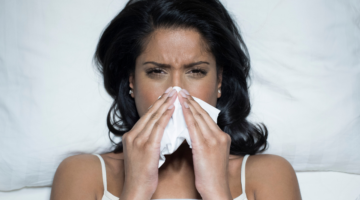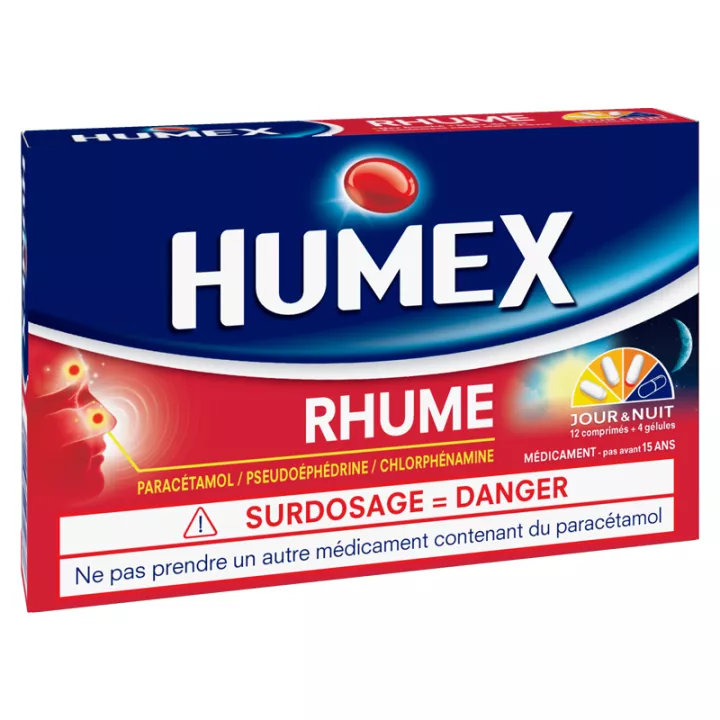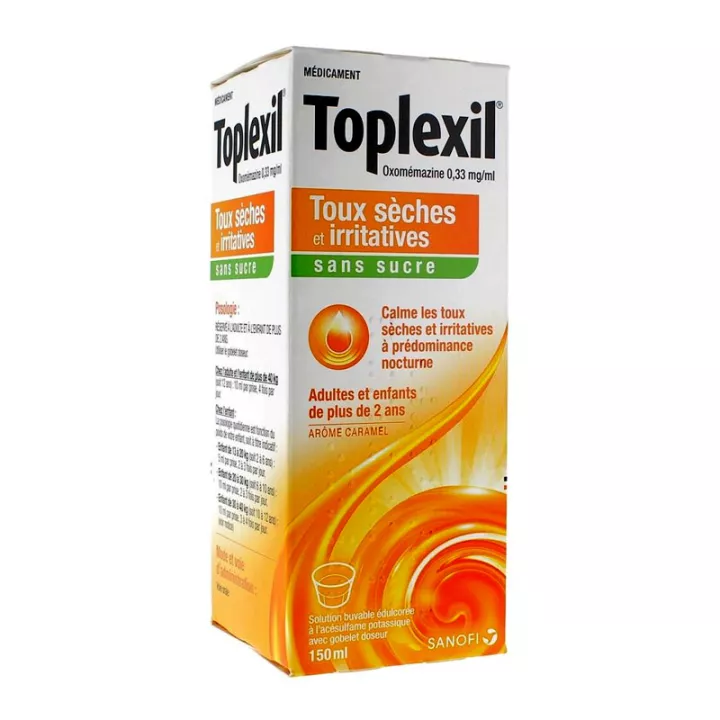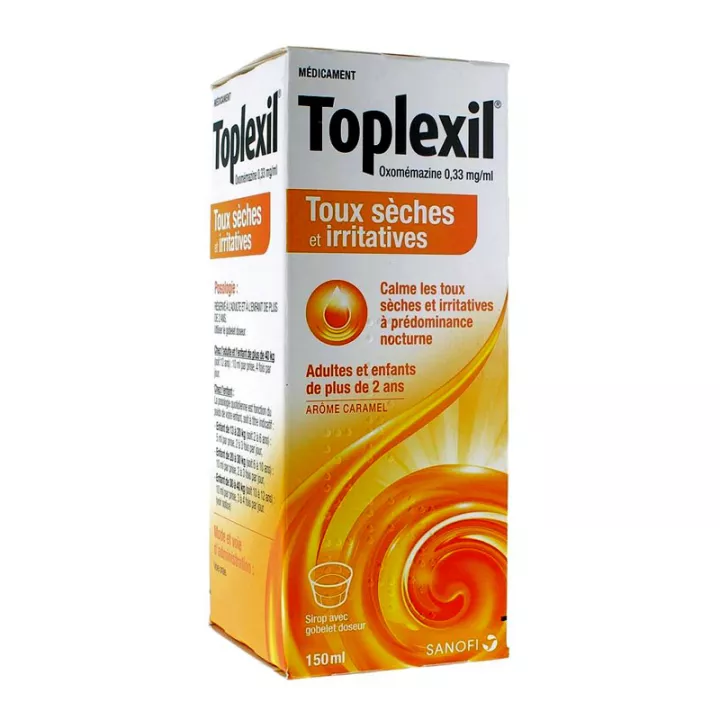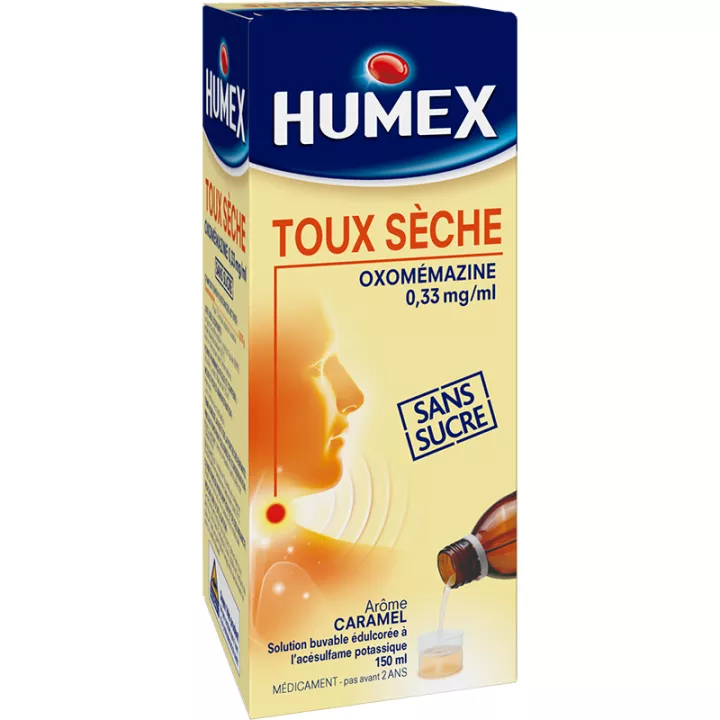NOTICE
ANSM - Updated on: 08/07/2015
Name of the medicinal product
FERVEX COLD DAY AND NIGHT, film-coated tablet
Paracetamol 500 mg, ascorbic acid 200 mg, chlorphenamine maleate 4 mg, pseudoephedrine hydrochloride 60 mg
framed
Read this leaflet carefully before you start taking this medicine. It contains important information for your treatment.
· This medication can be used in self-medication, ie used without consultation or prescription from a doctor.
· If the symptoms persist beyond 4 days of treatment, if they aggravate or if new symptoms appear, seek the advice of your phamacist or doctor.
· This leaflet is designed to help you use this medicine. Keep it, you may need to reread it.
DO NOT LEAVE THIS MEDICINE FOR CHILDREN
Review summary
In this notice :
1. What is FERVEX CHEMICAL DAY AND NIGHT, film-coated tablet and in which cases is it used?
2. What should be known before taking FERVEX CHEMICAL DAY AND NIGHT, film-coated tablet ?
3. How to take FERVEX COLD DAY AND NIGHT, film-coated tablet ?
4. What are the possible side effects?
5. How to store FERVEX CHEMICAL DAY AND NIGHT, film-coated tablet ?
6. Additional information.
1. WHAT IS FERVEX CHEMICAL DAY AND NIGHT, film-coated tablet AND WHAT IT IS USED FOR?
Pharmacotherapeutic group
DECONGESTION FOR SYSTEMIC USE.
This medication combines three active ingredients: an antipyretic analgesic (paracetamol), a nasal decongestant vasoconstrictor (pseudoephedrine), an antihistamine (chlorphenamine).
Therapeutic indications
This medication is indicated in adults and children over 15 years in the treatment during colds:
· stuffy nose sensations,
· clear nasal discharge,
· headache and / or fever.
2. BEFORE YOU TAKE FERVEX CHEMICAL DAY AND NIGHT, film-coated tablet?
List of information needed before taking the medication
Not applicable.
Cons-indications
Do not take FERVEX CHEMICAL DAY AND NIGHT, film-coated tablets in the following cases:
· In case of a history of allergy to the constituents of the product, especially antihistamines.
· Child under 15 years old.
· If you have had a stroke.
· In case of severe or poorly balanced blood pressure due to treatment.
· In case of serious heart disease (coronary insufficiency).
· If you have some forms of glaucoma (increased pressure in the eye).
· In case of difficulties to urinate of prostatic or other origin.
· In case of convulsions old or recent.
· In case of severe liver or kidney disease due to the presence of paracetamol.
· If you are breastfeeding.
· In combination with non-selective MAOIs due to the risk of paroxysmal hypertension and potentially fatal hyperthermia.
· In combination with other indirect sympathomimetics: vasoconstrictors intended to relieve nasal congestion, whether administered orally or nasally (phenylephrine (alias neosynhephrine), pseudoephedrine, ephedrine] and methylphenidate, due to the risk of vasoconstriction and / or hypertensive outbreaks.
· In combination with alpha sympathomimetics: vasoconstrictors intended to relieve the nose, whether administered orally or nasally (etilefrin, midodrine, naphazoline, oxymetazoline, phenylephrine, synephrine, tetryzoline, tuaminoheptane, tymazoline) because of the risk of vasoconstriction and / or hypertension.
The combination of two decongestants is contraindicated, regardless of the route of administration (oral and / or nasal): such an association is unnecessary and dangerous and corresponds to misuse.
You should not use this medication unless you are advised to do so by your doctor during pregnancy.
IN CASE OF DOUBT, IT IS ESSENTIAL TO ASK FOR THE OPINION OF YOUR DOCTOR OR YOUR PHARMACIST.
Precautions for use; special warnings
Take special care with FERVEX CHEMICAL DAY AND NIGHT, film-coated tablet:
Special warnings
DO NOT LEAVE THIS MEDICINE FOR CHILDREN.
· it is imperative to strictly observe the dosage, the duration of treatment of 4 days, and the contraindications.
· in case of overdose or mistakenly taking too high a dose, consult your doctor immediately.
This medicinal product contains paracetamol. Other medicines contain it. Do not combine them, so as not to exceed the recommended daily dose (see section Dosage).
During treatment, if there is a feeling of acceleration of the heartbeat, palpitations, onset or increase of headache, nausea, behavioral problems, stop treatment and immediately contact your doctor. doctor.
PREVENT YOUR DOCTOR, if you suffer:
· high blood pressure,
· cardiac disorders, hyperthyroidism (hyperfunction of the thyroid gland),
· personality disorders,
· of diabetes,
· predisposition to constipation, dizziness and urinary disorders.
PREVENT YOUR DOCTOR, if you take:
· a selective MAO-A (moclobemide, toloxatone),
· a treatment containing an alkaloid of rye ergot:
o dopaminergic, such as bromocriptine, cabergoline, lisuride or pergolide (eg, antiparkinsonian)
o vasoconstrictor, such as dihydroergotamine, ergotamine, methylergometrine, methysergide (for example an antimigraine)
· of the linezolid.
Precautions for use
If you have severe liver or kidney disease, you should consult your doctor before taking this medication (because of the presence of paracetamol).
This drug may cause alcohol-induced drowsiness: it is best to start the evening treatment and refrain from alcoholic beverages or medication containing alcohol during the course of treatment.
In case of purulent nasal discharge, persistent fever, no improvement after 4 days of treatment, CONSULT YOUR DOCTOR.
IN CASE OF DOUBT, DO NOT HESITATE TO ASK FOR THE OPINION OF YOUR DOCTOR OR YOUR PHARMACIST.
Interaction with other medicines
Taking or using other medicines:
If you are taking or have recently taken any other medicines, including medicines obtained without a prescription, talk to your doctor or pharmacist.
This medicine contains a vasoconstrictor, pseudoephedrine.
This medication should not be used in combination with:
· vasoconstrictors whether oral or nasal (phenylephrine (alias neosynhephrine), pseudoephedrine, ephedrine, methylphenidate, eleflorthine, midodrine, naphazoline, oxymetazoline, synephrine, tetrazoline, tuaminoheptane, tymazoline);
· a non-selective MAO-A (iproniazide).
It is not recommended to use this medication if you are already treated:
· by a selective MAO-A drug, a drug prescribed in some depressive states;
· and / or other dopaminergic or vasoconstrictor drugs such as bromocriptine, cabergoline, lisuride, pergolide or dihydroergotamine, ergotamine, methylergometrine, methysergide, drugs prescribed to treat certain neurological or endocrine disorders or migraines ;
· by linezolid.
The use of alcoholic beverages or medicines containing alcohol should be avoided during the treatment.
Tell your doctor or pharmacist of all prescription and nonprescription / herbal products you may use before using this medication.
In order to avoid the adverse effects of an overdose, DO NOT ASSOCIATE WITHOUT MEDICAL ADVICE other medicines containing vasoconstrictors, paracetamol or antihistamines. IN CASE OF DOUBT, DO NOT HESITATE TO ASK FOR THE OPINION OF YOUR PHYSICIAN OR YOUR PHARMACIST. |
Interactions with food and beverages
Food and drinks
Refrain from alcoholic beverages during the treatment.
Interactions with Herbal Medicines or Alternative Therapies
Not applicable.
Use during pregnancy and lactation
Pregnancy and breast feeding
Ask your doctor or pharmacist for advice before taking any medicine.
Pregnancy
The use of this medication is not recommended during pregnancy.
feeding
Due to possible adverse effects in infants, taking this medication is contraindicated if you are breast-feeding.
Sport
Sport
The attention of athletes is drawn to the fact that pseudoephedrine can induce a positive reaction of tests performed during doping controls.
Effects on ability to drive or use machines
Driving and using machines
Attention is drawn, especially to vehicle drivers and machine users, on the risks of drowsiness or decreased vigilance associated with the use of this medication.
This is exacerbated by the use of alcoholic beverages, drugs containing alcohol or sedative drugs.
List of excipients with known effect
Not applicable.
3. HOW TO TAKE FERVEX COLD DAY AND NIGHT, film-coated tablet?
Instructions for proper use
Not applicable.
Dosage, Mode and / or route (s) of administration, Frequency of administration and Duration of treatment
Dosage
This presentation is reserved for adults and children over 15 years of age.
The dosage is:
· 1 tablet day (clear) in the morning, to be renewed if necessary at noon and dinner,
· 1 tablet night (dark) in the evening at bedtime.
The catch must be spaced at least 4 hours apart.
Do not exceed the maximum dose of 3 tablets per day and one tablet per 24 hours per day.
IN CASE OF DOUBT, ASK FOR ADVICE TO YOUR DOCTOR OR YOUR PHARMACIST.
Method and route of administration
Oral use.
Swallow the tablet with a large glass of water.
Frequency of Administration
The catch must be spaced at least 4 hours apart.
In case of severe kidney disease (severe kidney failure), space the catch for at least 8 hours.
Duration of treatment
The duration of use is limited to 4 days. If there is no improvement as in the case of symptoms persisting beyond 4 days of treatment, take a medical opinion.
Symptoms and Instructions for Overdose
If you take more than FERVEX COLD DAY AND NIGHT, film-coated tablet you should not have:
STOP TREATMENT AND IMMEDIATELY CONSULT A DOCTOR.
Instructions for omission of one or more doses
If you forget to take FERVEX CHEMICAL DAY AND NIGHT, film-coated tablet:
Do not take a double dose to make up for the single dose that you have forgotten to take.
Risk of withdrawal syndrome
Not applicable.
4. WHAT ARE POSSIBLE SIDE EFFECTS?
Description of adverse reactions
Like all medicines, FERVEX CHEMICAL DAY AND NIGHT, film-coated tablets are likely to have side effects, although not everybody gets them.
Because of the presence of pseudoephedrine , this drug may cause:
General effects such as:
· headaches, strokes,
· palpitations, high blood pressure, myocardial infarction, sweating, behavioral disturbances, nausea, vomiting,
· the onset of an acute glaucoma crisis in predisposed subjects that can result in a red and painful eye,
IN THESE CASES, STOP TREATMENT AND IMMEDIATELY CONTACT YOUR DOCTOR.
May also occur:
· allergic reactions,
· urinary disorders (significant decrease in urine, difficulty urinating),
· a dry mouth,
· convulsions, hallucinations, agitation, behavioral disorders and insomnia have been described in particular in children,
· memory or concentration disorders, confusion, dizziness (more common in the elderly),
· a motor incoordination, tremors,
· drowsiness, decreased vigilance, more marked at the beginning of treatment,
· allergic reactions:
o of rash type (redness, itching, hives, eczema),
o angioedema (abrupt swelling of the face and neck may cause respiratory discomfort),
o anaphylactic shock (violent and very severe allergic reaction),
· fall in blood pressure during standing up, which may be accompanied by dizziness,
· more rarely, changes in the blood form have been described with antihistamines,
· exceptionally haemorrhagic strokes have been reported in patients treated with medicinal products containing a vasoconstrictor, such as overdosage, contraindications or warnings, or in patients with vascular risk factors (see sections 2. What should be known before taking FERVEX RHEUME DAY AND NIGHT, film-coated tablet, subheadings: "Never take FERVEX CHEMICAL DAY AND NIGHT, film-coated tablets in the following cases", "Take special care with FERVEX COLD DAY AND NIGHT, film-coated tablet ".
IN THESE CASES, STOP TREATMENT AND IMMEDIATELY CONTACT YOUR DOCTOR.
Because of the presence of paracetamol:
· In some rare cases, it is possible that a rash or reddening or allergic reaction can occur, which can be manifested by a sudden swelling of the face and neck or by a sudden discomfort with drop in blood pressure. Immediately stop treatment, tell your doctor and never take any medicines containing paracetamol.
· Exceptionally, biological changes requiring blood check have been observed: abnormally low levels of certain blood components (platelets) which can result in nosebleeds or gums. In this case, consult a doctor.
If you experience any side effects, talk to your doctor or pharmacist. This also applies to any side effects not mentioned in this leaflet. You can also report adverse reactions directly via a declaration: National Agency for the Safety of Medicines and Health Products (Ansm) and network of Regional Centers of Pharmacovigilance - Website: www.ansm.sante.fr . By reporting adverse reactions, you are helping to provide more information about the safety of the drug.
5. HOW TO STORE FERVEX CHEMICAL DAY AND NIGHT, film-coated tablet?
Keep out of the reach and sight of children.
Expiration date
Do not use after the expiry date stated on the carton.
Storage conditions
Store at a temperature not exceeding + 25 ° C.
If necessary, warnings against visible signs of deterioration
Medicines should not be disposed of via wastewater or household waste. Ask your pharmacist what to do with unused medications. These measures will help protect the environment.
6. ADDITIONAL INFORMATION
Full list of active substances and excipients
What does FERVEX CHEMICAL DAY AND NIGHT contain, film-coated tablet?
The active substances are :
Composition for a clear tablet (for the day)
Paracetamol ................................................. .................................................. ............................. 500.00 mg
Ascorbic acid (vitamin C) ............................................ .................................................. .......... 200.00 mg
Pseudoephedrine hydrochloride ............................................... .................................................. .. 60.00 mg
The other components are :
Pregelatinized corn starch, corn starch, stearic acid, film coating *, polish **, red coloring agent ***, blue coloring agent ****
* Lamination:
E440), glycerol dibehenate (E471), titanium dioxide (E171), stearic acid of vegetable origin (E570), sorbitol (E420)
** Polish:
Purified water, beeswax, carnauba wax, polysorbate 20, sorbic acid
*** Red coloring agent (E129):
Food Red 17, Color index N ° 16035, red lacquer Allura AC aluminum
**** Coloring agent blue (E132):
Indigotine, CI blue pigment 63, Color index N ° 73015
Composition for a dark tablet (overnight)
Paracetamol ................................................. ................................................ 500, 00 mg
Chlorphenamine Maleate ............................................... ................................. 4.00 mg
The other components are :
Croscarmellose sodium, hypromellose, microcrystalline cellulose, povidone, glycerol behenate, magnesium stearate, film coating *, polish **
* Lamination:
Hypromellose (E464), propylene glycol (E1520), titanium dioxide (E171), carmoisine (E122), indigo carmine
** Polish:
Purified water, beeswax, carnauba wax, polysorbate 20, sorbic acid
Pharmaceutical form and content
What is FERVEX CHEAP DAY AND NIGHT, film-coated tablets and contents of the pack?
This medication is in the form of film-coated tablets.
Box of 12 clear film-coated tablets and 4 film-coated tablets.
Name and address of the marketing authorization holder and the holder of the manufacturing authorization responsible for the release of the lots, if different
Holder
UPSA SAS
3 RUE JOSEPH MONIER
92500 RUEIL-MALMAISON
exploiting
UPSA SAS
3 RUE JOSEPH MONIER
92500 RUEIL-MALMAISON
Maker
UPSA SAS
304, AVENUE OF DOCTOR JEAN BRU
47000 AGEN
or
UPSA SAS
979, AVENUE DES PYRENEES
47520 THE PASSAGE
Names of the medicinal product in the Member States of the European Economic Area
Not applicable.
Date of approval of the notice
The last date on which this leaflet was approved is {date}.
AMM under exceptional circumstances
Not applicable.
Internet Information
Detailed information on this medicine is available on the ANSM website (France) www.ansm.sante.fr
Information for health professionals only
Not applicable.
Other
ADVICE / HEALTH EDUCATION
"WHAT TO DO IN CASE OF A NOSE MOUTH OR NOSE THAT CASTING":
This medication is used in the treatment of stuffy nose sensation and headache and / or fever during colds in adults and children over 15 years of age.
The common cold is a very common acute benign infection that affects the nasal mucosa (inner lining of the nose). This mucous membrane secretes a liquid whose role is to constantly moisten the inspired air and to fight against the infectious agents. When this mucous membrane is irritated, it swells and increases its usual liquid secretion, so that the nose "is clogged" or that the nose "flows".
In order to limit the onset of symptoms, respect the following hygiene rules as much as possible:
· Wash hands regularly, especially before meals or during preparation;
· cover your mouth when you cough or sneeze;
· blow your nose often with disposable handkerchiefs (not to recontaminate) and dispose of them in a trash can immediately after use and then wash your hands;
· avoid a visit to a woman who has recently given birth and her newborn, an elderly person, or a person treated with immunosuppressants (corticosteroids, medicines for blood or cancer). In these cases, wearing the mask is recommended.
For your comfort :
· drink enough;
· moisten the nasal mucosa with suitable washing solutions (physiological saline, sprays of thermal water or sea water). Avoid using the same nosepiece for the whole family.
· avoid smoking or breathing the smoke of others;
· sleeping the raised head to improve the airflow in the nostrils and sleeping enough;
· protect the skin of the upper lip and nostrils by a cream if the repetition of the flies tends to irritate the skin;
· avoid air conditioners that dehumidify the air and dry the nasal mucous membranes, the ideal room temperature should be around 18-20 ° C;
· aerate the parts regularly.
"WHAT TO DO IN THE EVENT OF FEVER":
Normal body temperature varies from person to person and ranges from 36.5 ° C to 37.5 ° C. An elevation of more than 0.8 ° C is considered a fever.
In adults and children over 15 years of age: if the disorder is too troublesome, you can take this medicine which contains paracetamol in accordance with the indicated dosages.
With this medication, the fever should drop rapidly. Nevertheless :
· if other signs appear (such as a rash),
· if the temperature persists for more than 3 days or if it worsens,
· if the headache becomes violent, or in case of vomiting,
CONSULT YOUR DOCTOR IMMEDIATELY.
